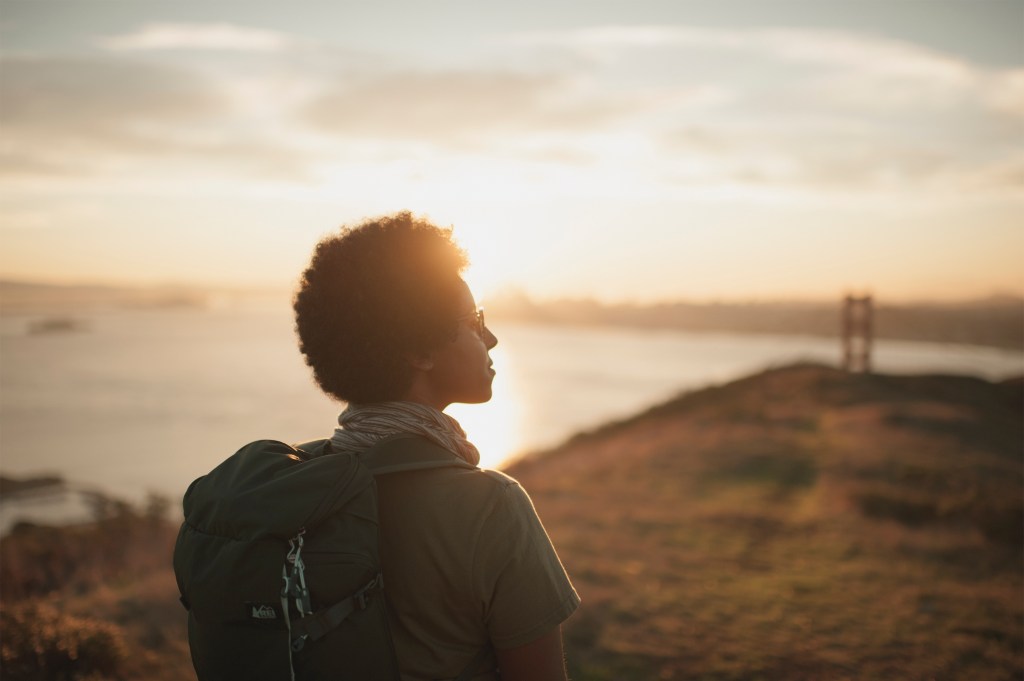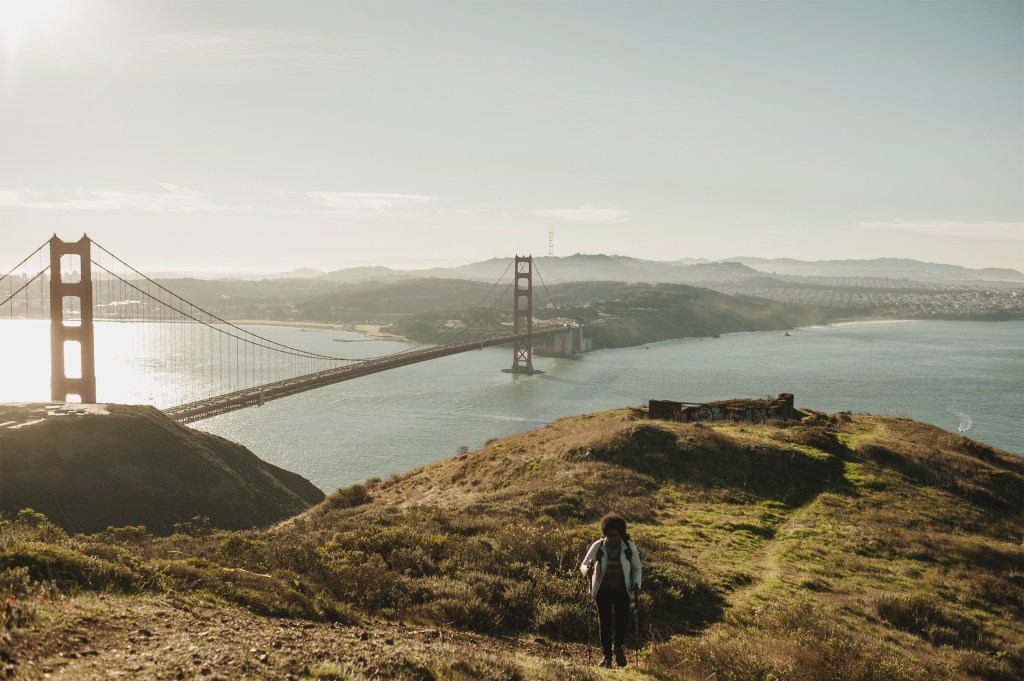For our 82nd anniversary, we’re highlighting 82 of your outdoor stories. Share your favorite story on Facebook, Twitter or Instagram with a photo or video and tag #REImember.
The world outside our walls and windows is vast and broad. From a backyard to the backcountry, city parks to national forests across the nation, there is no single definition for the “outdoors.” REI Co-op member Rahawa Haile, a writer and 2016 Appalachian Trail (AT) thru-hiker currently living in Oakland, California, knows that as well as anyone.
“I think it really does depend on the person… Hiking the AT is great. I am just as impressed with someone who goes to their local park and spends an hour walking three miles every single day,” she says after we finish an hour-long hike atop Slacker Ridge just outside San Francisco. Looking down and across the bay, as the morning sun peeks out behind glass buildings and the iconic Golden Gate Bridge, we’re surprised at how close we are to the city still sleeping below. And how far away we feel.

Photo Credit: Carina Skrobecki @caskro
“Right now, when you see many outdoor catalogs, you have people who are rock climbing, paddling white water or tackling some very complicated hiking route,” she says. That can be incredibly intimidating for someone who’s interested in the outdoors but not sure where to start. But since those sorts of places aren’t in everyone’s backyard, there are opportunities a lot closer to home. However, she says, “I don’t think we’ve done a good enough job saying here are all the places that are nearby, that are just as spectacular, and here’s how easy it is to get to them.”
Growing up in Miami, Rahawa often spent timing walking in the city with her grandmother. Together, they found magic in the simple feeling of fresh air on their faces. As an adult, she lived in Brooklyn, and to this day remembers how easy the trip to Breakneck Ridge seemed on the Metro North train. As a result, and from an early age, she found a way to enjoy the outdoors, safely, which to her cannot be overstated. Safety for newcomers in the outdoors is paramount—specifically for less talked about things like Lyme Disease. “There are people who don’t know how to remove a tick. There are people who don’t know how to look for ticks. We need to educate people who didn’t grow up in the outdoors about how to be in the outdoors safely,” she says.

Photo Credit: Carina Skrobecki @caskro
When asked how someone in a major metropolitan area can get outside and stay safe, she stops, thinks, then says, “there’s no one answer.” And she’s right. Every city is different. Every person is too. A study by University of Chicago assistant professor Marc G. Berman found 50 minutes spent walking in an arboretum improved memory and attention. But not every city has an arboretum. “Biking as little as one hour a week helps prevent heart disease,” according to research in the American Heart Association Journal. But not everyone has a bike.
Although Rahawa is currently considering another thru-hike, she makes time when possible to get outside in other ways. “Day hikes are wonderful, but I find peace just walking the 45 minutes to get to work. It’s so good for my mind, and I love getting to know the people in my community.” When you travel places on foot, it’s amazing what you’ll notice. When the world isn’t framed by a window or blocked by a wall, everything in it can feel closer and more familiar.
Even though that works for her, she acknowledges it’s not applicable or available to everyone. “If the sun sets at 4:30pm in Chicago and you can’t walk until you get off of work, then it’s just not an option.” But rather than accept that universally, she spends time helping friends combat and overcome the barriers she faced early on.

Photo Credit: Carina Skrobecki @caskro
Whether that’s knowledge and confidence, gear or just getting to the right trail, she takes time to educate and encourage anyone and everyone she can. She recalls how, “many people take that knowledge for granted because they grew up with it. Almost every hiker I ask, ‘how did you get into the outdoors, on the AT,’ they say, ‘my family took me camping.’ But if you didn’t have that I think it’s hard to jump into that.”
She credits organizations like Outdoor Afro, Fat Girls Hiking and many others at helping connect new and more diverse communities to the outdoors. “GirlTrek is dedicated to getting black women to walk for at least 30 minutes a day, and I think we need to champion efforts like that. Because they make it accessible,” she says. When it comes to gear, she leaned on fellow and former thru-hikers — the first being @walkingwithwired. In addition, she says, “I found a woman named ‘Chardonnay,’ and at the time she completed the PCT and had a website about it. Just to see that another black woman had completed the trail was massive for me.”
It’s clear from the warmth in her voice that these groups and role models helped her before, during and after her 2,000+ miles on the AT. “Perhaps what you need to do is hear a thru-hiker say you can do it.” While she says she may be among the last people anyone expects to be on a thru-hike, she certainly sounds like a thru-hiker. Encouraging, empowering and able to tell you the individual weight of her base layer from memory.
